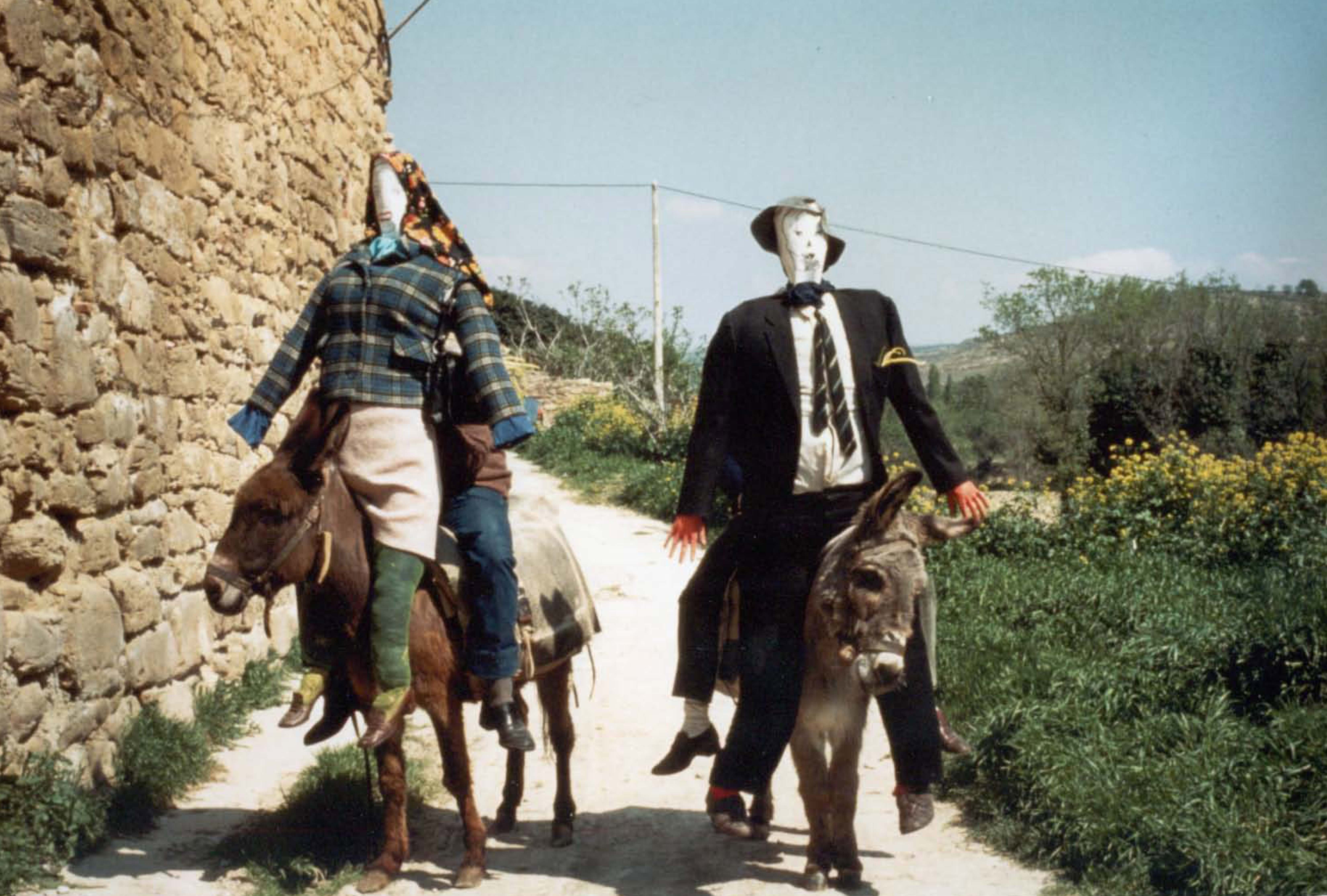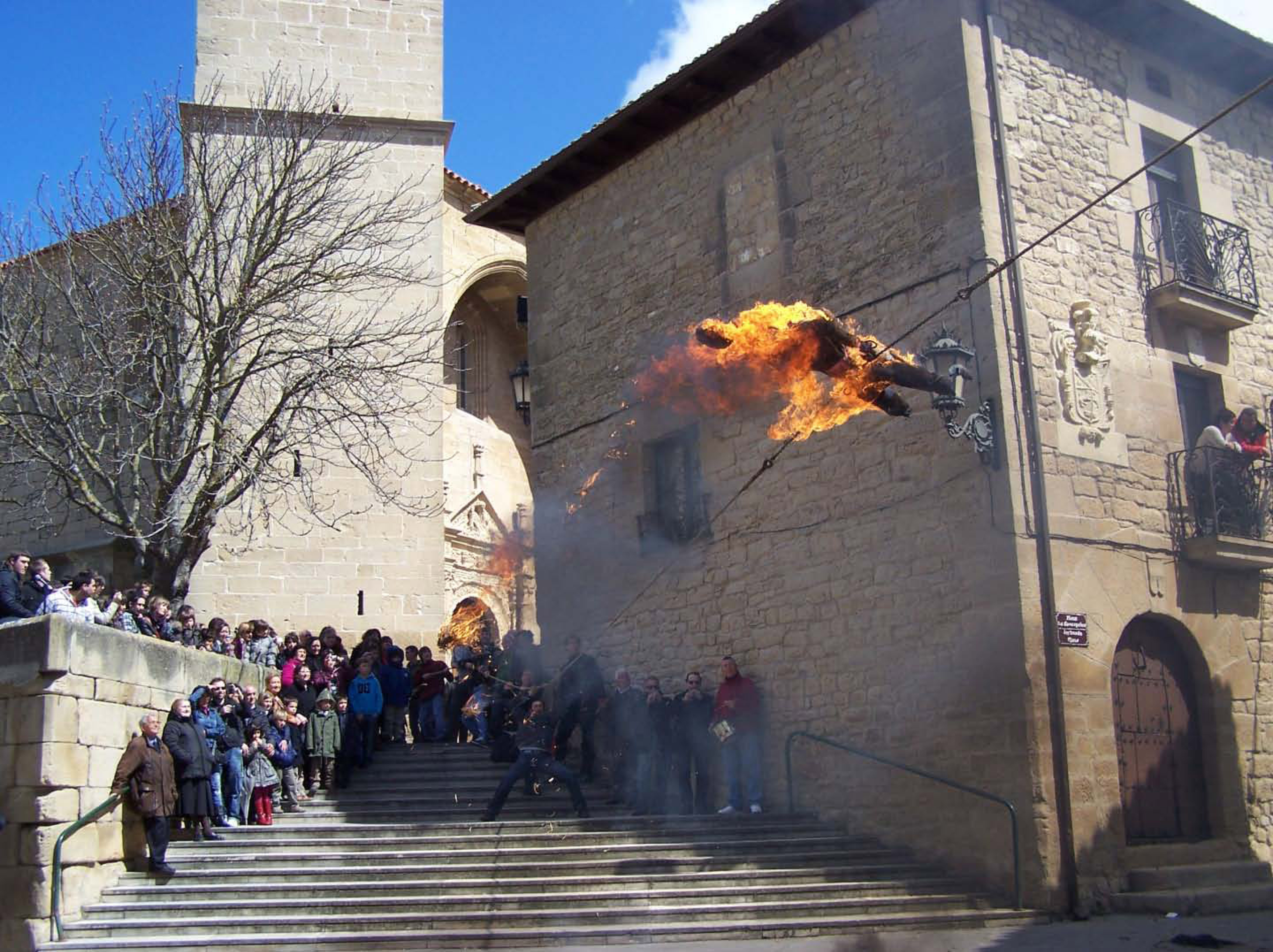Basque ethnography at a glance
The burning of straw puppets at certain times of the year is quite an extended practice in rural Europe and Latin America. Dummies are traditionally burned at Christmas, Carnival, Easter, patron saint celebrations… It is the immolation of Judases during Eastertide in Álava and Navarre we shall address here. Álava and Navarre are the Basque territories where the custom is more deeply rooted. In Álava, it is particularly popular in Salinas de Añana and Lagrán, as well as Moreda and Samaniego. Formerly, mistreatment of Judas figures took place in every town of La Rioja and Álava.
Here follow the events of the ritual: making of rag dolls stuffed with straw, tour of the dolls through the streets and display in a public place, reading of the charges, judgement of conviction, and final burning. In Moreda the puppets are spectacularly turned in the air while in flames.
Judas dolls represent the personification of evil. They are held responsible for all the misfortunes and calamities brought upon people, animals and crops over the last year. The ceremonial purification by fire seeks to stop the badness happening around us and condemns recent adverse incidents, disgraces and miseries. Evil is embodied in effigies set aflame during a magical ritual.
Aside from the purifying intention and underlying socio-political criticism, it is a festive and fun event. Judas burnings are far from anachronisms. They have a symbolic value that goes beyond the preservation of a tradition. The written allegations consist of humorous and ironic series of statements by which the puppets are blamed and held accountable for every ill: thefts, diseases, sorrowful happenings, hailstorms, ground frosts, droughts, poor harvests… Social criticism is raised and the political will of the people shown through these writings.
This tradition long precedes the dissemination of Christianity. Efforts have been made in order to suppress any pagan influence and use the moralizing essence of the custom to suit the requirements of the Church. The burning of Judases is a cleansing ritual to mark the beginning of a new cycle of nature: spring. Fields blossom, love fills the air and nature awakens from its winter lethargy and comes back to life with the arrival of springtime. All negativity harboured throughout the old year is destroyed. The ridding of evil is accomplished by means of the immolation of Judas puppets which, as a matter of fact, show closer links to Carnival than to Lenten austerity.
Originally the dummies would be named after malefic spell casters. With the advent of Christianity, those images were identified as characters that, for a number of reasons, were looked upon with contempt. Judas being one of the most hated and despised biblical villains, people started to associate them with him. As on other occasions, the Church managed to tailor the message behind the habit of burning straw dolls to match its own interests and doctrine. It is customary to burn them on Easter Sunday.
José Ángel Chasco – Etniker Álava – Etniker Euskalerria Groups
Translated by Jaione Bilbao – Language Department – Labayru Fundazioa
Reference for further information: Ethnographic Atlas of the Basque Country.



